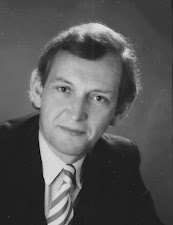The dirty tricks to quash knowledge of the truth about the Kennedy assassination do not cease.
ONLY YOU can save the truth. Tell others what's going on.
As my dear friend Martha Rose Crow said in her landmark poem, WHEN THE BOOTJACKS COME FOR YOU -- a poem I shall shortly publish for her (she died soon after she and I received identical death threats, while we were finishing a book about Political Ponerology) -- IT WILL BE TOO LATE IF YOU WAIT.
help me now, while I'm still able to speak.
Disgusted by the fact that I could find almost nothing about the many enemies of Kennedy on YOUTUBE videos, I made a small video showing their faces, but not many of the names. I decided then to list them --and the video--here for your information.
That's when I discovered that the "number of views" of the video--which had skyrocketed in just a few days -- had been pulled back to 27. There had been 33 views in the first 12 hours that the video was put up, and after that, it was publicized on CAUSE FOR THE VINDICATION OF JUDYTH VARY BAKER, which has over 150 members.
Nevertheless, the number of views suddenly became ZERO views!
Today, I see 27 views.
Lee Harvey Oswald: Accused -- Kennedy's Enemies: Ignored
JFK--John F Kennedy -- was not assassinated by Lee Harvey Oswald. Oswald was
innocent. The SAME day Kennedy was shot, and Oswald arrested ,J Edgar...
OBVIOUSLY, THE NUMBER OF ACTUAL VIEWS CANNOT BE TRUSTED. A SIMILAR OCCURRENCE TOOK PLACE WITH 'THE LOVE AFFAIR'---AFTER THAT DOCUMENTARY (NOW BANNED) ABOUT LEE AND ME REACHED 60,000 VIEWS, THE VIEWS WERE LOWERED TO 40,000 AND THE SEGMENTS WERE SEPARATED. IT WAS ALMOST IMPOSSIBLE TO FIND ALL FIVE OF THEM.
I guess in the present case, a decision was made to remove the number of views right away, so the video would not be considered popular right from the beginning. The counter then resumed....
Therefore, I'm presenting it here, for you to view. Send this video to your friends to view, too--it's less than 9 minutes long.. Copy the 'embed' code posted at
http://www.youtube.com/watch?v=Tb46jE6xHrs
and put it on your blogs and on Facebook.
Let's experiment, and see how many views we can generate --let's keep track of them! Just write in the 'comment' section what you see!
####


